Features of selecting a pump for watering the garden, depending on the source of water intake
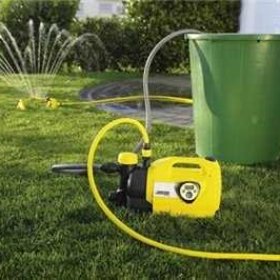
During the summer period, summer residents have a hard time, because the garden requires constant care, and most of the work is done manually. The hot season is especially difficult, when you have to rush about with watering cans and water the plants daily. Well, if the house has a central water supply, but not every dacha has such an opportunity. More often, owners use wells or containers in which rainwater accumulates. But she herself will not run to plants. It must be delivered. Wearing heavy buckets is unpleasant, and the spine will have a hard time. But the problem can be solved with the help of special equipment - pumps. We will figure out what pumps exist for watering the garden and how to choose the right model for you.
Content
Factors Determining the Type of Pump
There are many varieties of pumps for watering summer cottages. True, they were not created specifically for summer residents, but they are united by one thing - working with water. But the selection of the device depends on what water you are going to pump and where you will get it from. For plants, water should not be perfectly clean and transparent. They need warm, preferably settled water without harmful impurities and chemical waste products. The ideal option is rainwater, which the owners accumulate in different tanks throughout the site.
More often, water is taken directly from a well or well. But its temperature is quite cold, and if you constantly water the plants with such water, then many crops will begin to rot the root system (for example, cucumbers). To warm well water, summer residents raise it to the surface and allow it to warm up for several hours in some containers. And then scoop buckets and watered. The same system is used to collect water and residents whose cottages are located next to natural reservoirs. They pick it up in barrels, defend a couple of hours and then start watering.
If the site’s landscape includes artificial ponds (a pond or a home pool), then you can use them to water them. It will be warm, settled, but in this case the pool cannot be cleaned with chemicals, otherwise all the “chemistry” will get to your table with vegetables. This type of irrigation provides a double benefit: you will periodically update the liquid in the pond and find where to put the old one.
Water in all the listed sources differs in the degree of pollution. And when choosing garden watering pumps necessarily take into account the place from which water will be drawn.For each source, separate types of surface, submersible, drainage and other units have been developed.
Parameters for selecting pump specifications
In addition to the type of pump, it is necessary to take into account its technical capabilities: power, performance, etc. For this, you will have to analyze the following parameters in advance:
- How many meters from the source of the intake to the extreme point of your garden.
- How many meters is the height difference from the place where the pump will be installed, to the extreme point of the garden.
- How often do you plan to water your beds?
- What is the area occupied by garden crops that need constant watering?
- What type of watering you choose (under the root, sprinkling, drip, etc.).
Now we dwell in more detail on the most important points.
Performance calculation
If we take the averaged indicators, then roughly calculate the characteristics of the pump as follows:
According to SNiP standards for watering 1 sq.m. beds or beds per day leaves 3-6 liters of water (depending on the climate and soil condition). So, if the area of your garden is 200 sq.m., you will need 200 X 6 = 1200 liters. water per day. Accordingly, the pump must be able to pump such a volume of liquid in an hour, because no one wants to spend more time on watering. You will find the performance of a specific model in the instructions or on the label on the device itself. It is indicated by the letter Q and in our case should be close to the numbers 1.5-2 cubic meters. in hour.
How to calculate the recommended pressure?
The second indicator is the height to which the unit will be able to lift water from a river, well, well, etc. (i.e. head). The higher it is (in meters), the greater the distance can be between the pump and the water intake point. For example, if the maximum height of the model is declared as 40 meters, then your well or river cannot be removed from the extreme point of watering the plot by more than 400 meters, since 1 vertical meter corresponds to 10 meters horizontally for hoses with a size of 1 inch.
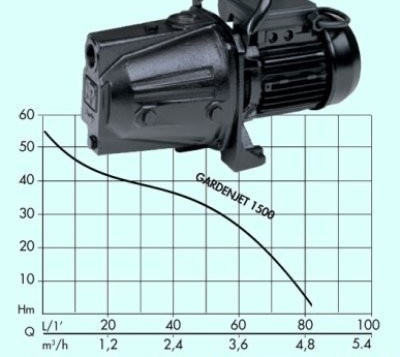
The greater the distance or height from the water intake point to the beds, the weaker the pump performance, as the water pressure loss increases
Now we will carry out calculations using a specific example, so that you understand what numbers you need to accurately calculate on the site, before you go to the store for a pump. These calculations are suitable for any type of pump designed for pumping water from reservoirs, wells, wells.
For example, you plan to water the site with water from a well located 30 meters from the extreme point of the garden. You will lower the pump to a depth of 6 meters.
- We calculate the length of the pipeline: 30 + 6 = 36 m.
- We give a discount on the pressure loss inside the pipeline and in the places of connections, turns, etc. As a rule, it is 20% (0.2) of the total length of the hose or pipe. So, 36 X 0.2 = about 7 meters.
- Add this figure to the height to which the water column must be raised, in this case 6 m depth, we get - 13 m.
- So that the pump works without overloads, and the outlet pressure remains within the normal range, they spray another 10 m. Total, 13 + 10 = 23 m. This will be the pressure recommended for these conditions of use, which is indicated in the instructions as H (height, pressure) . Thus, in this situation, you can choose pumps with N from 25 to 30 m.
The power of the motor will depend on the type of irrigation. For drip irrigation, low-power systems are used, and if sprinkling is used, on the contrary, systems that can withstand high pressure are needed.
Pumps for pumping water from tanks
Among all devices, a barrel irrigation pump is considered the easiest to maintain and connect. It is ideal for summer cottages: it weighs little (up to 4 kg), works with containers whose depth does not exceed 1.2 meters, makes little noise and is easily fixed. They fix the pump directly on the barrel, insert the plug into the outlet - and begin watering. You can set the desired jet pressure yourself using the pressure regulator.The pumps have a built-in filter that will not allow garbage and solid particles to pass through, so you can immediately pour fertilizers into the barrel and start watering with a ready-made solution.
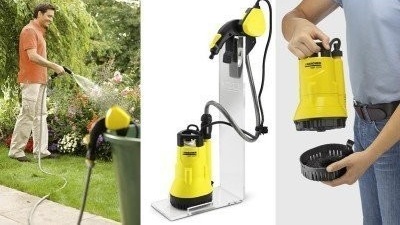
Pumps for tanks are lightweight and easy to install, so they can be freely moved around the site during irrigation
But practice shows that the built-in filters do not always completely stop particles of solid fertilizers that do not have time to dissolve. Even the most expensive systems will clog and have to be cleaned. But you can avoid this if you consider a homemade additional filter. They make it simple - from the old tulle. Look for a canvas that is larger in size than the volume of your barrel (so that the edges hang outward). The pump is immersed inside the tulle, and the edges of the material are tied to the edge of the tank. There is no need to fear that the fabric will be drawn into the pump, because the motor is protected by a filter at the outlet. He will protect the system from sucking tulle, but the problems with technology will be reduced.
Alternatively, you can suspend the pump from a board placed on the tank so that it does not reach the bottom of centimeters by 5. Then all the rust and sediment will remain at the bottom, and will not go into the system.
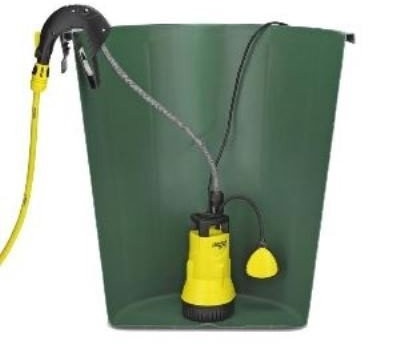
The filter elements of the pump are located in the lower part of the casing, so the sludge and fertilizer residues have every chance of clogging the system
There are models with different power levels on sale. If you have a large area for the garden, then take the pumps with a two-stage mechanism. Although they are more expensive, they are designed for large volumes of work and do not overheat with prolonged use. For a few flowerbeds, a low-power apparatus is enough.For example, such well-known manufacturers as Gardena and Karcher have not too expensive options, the price of which starts from 2.5 thousand rubles. They are able to pump about 2 thousand liters. per hour, which is more than enough for small areas. If the area is large, then look at more powerful options. The maximum productivity of barrel pumps of these companies is 4 thousand liters per hour. For those who are looking for something cheaper, it is worth considering Belarusian ZUBR brand pumps. They all come with a float, similar in characteristics to Gardena, but the price is 1.5 times lower and the warranty is 5 years.
Most barrel units are sold without a hose, so it’s more convenient to buy a kit. It immediately has a watering hose (length - about 20 m), 2 nozzles, an outlet fitting and a spray nozzle, and in cheap devices some parts will have to be purchased separately.
Important! If you choose a system with a float switch, you will not need to control how far the barrel is empty. The pump will shut itself off as soon as the water level drops to the minimum. Accordingly, the risk of breakage during dry running is excluded.
Ponds + wells = surface pump
Surface pumps are produced to draw water from wells with a shallow shaft or reservoirs (clean rivers, pools). Their power is designed to lift liquids from shallow depths (not exceeding 10 meters). These pumps operate on the surface (hence the name). The device itself is installed on the ground, and a hose is lowered into the pond. Rubber hoses cannot be used for such purposes, because rarefied air forms inside the walls during the pumping process and the hose is compressed, blocking the passage of water.
To connect the pump, you need to put it on a solid base and attach the hoses. But be prepared that during operation the system will make a lot of noise. You can suppress the degree of noise with a rubber rug, but if it is not there, then hide the unit in a barn.
The advantage of surface pumps that take water from a pond or well is that you do not need to move around a lot to water. Due to the powerful jet, you can irrigate about 40-50 meters, standing in one place.
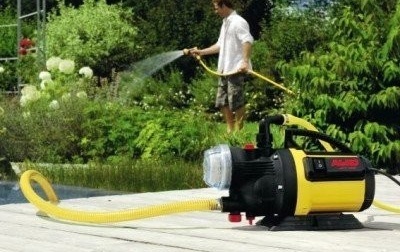
When watering, it is necessary to install surface pumps on a solid base, and so that it makes less noise, put a rubber mat
Many summer residents are wondering if it is possible to put such a pump on the site, and to pull long hoses to the source of water (i.e. the river), because some systems are quite heavy, and not everyone can carry them back and forth, and they can steal, while you run. Definitely not. The maximum distance to the water is 9 meters (taking into account the immersion of the hose). Such devices are not designed for more.
Of the two types (vortex and centrifugal), the first is created only for pure water, which means that you can’t use it in reservoirs. The second is not so sensitive to impurities, and if it is equipped with an additional filter, then you can swing from a shallow river. The vortex efficiency does not exceed 50%, but with similar centrifugal characteristics it will create 5 times more pressure, which with some types of watering (for example, by sprinkling) plays a decisive role.
Of the obvious advantages of surface pumps, their ability to operate normally with frequent starts, i.e. you can turn off and turn on the watering gun, without fear that the motor will burn.
Drainage pumps - for contaminated water bodies
If you plan to take water from a swamp, a pond, then it is better to give preference to a drainage pump. They are produced specifically for pumping heavily polluted waters, in which there is a lot of garbage. Filters and a grinder are installed in the pump, grinding solid particles almost into powder. For irrigation from a pond, a drainage pump is ideal because it will not clog, and all the "good" picked up from the bottom (silt, shells, etc.) will be sent to your beds in a crushed state, thereby fertilizing them.
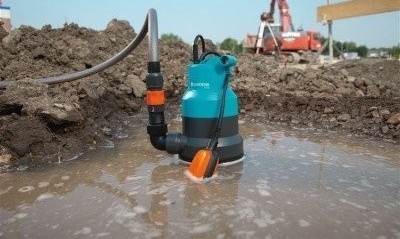
Drainage pumps are equipped with elements that filter and crush small particles, so they will not clog in heavily polluted water of a natural reservoir or pond
But note that the pressure in such systems is weak, and you can only water by gravity. If you connect a nozzle, such as a spray gun or a gun, then the water will not go at all. The best option for using drainage machines is to pump dirty water into a container so that it settles, becomes cleaner, and even from a barrel you can water it with a surface or submersible pump, providing protection against ingress of sediment from the bottom.
When is it better to take a submersible unit?
If a well is drilled in a section or a well is dug, a submersible pump will be a convenient option for taking water from them. It is placed completely in the water, and the choice of a particular model will depend on how high it is able to raise the water column.
Low-power submersible pumps are designed for use in wells and reservoirs with sufficient depth. The simplest options are vibration models such as "Trickle", "Rodnichok", etc. They serve well when lifting water from a shallow well or near a reservoir, as they are immersed in water to a depth of 3 meters. In this case, from the beginning of the water mirror should be at least half a meter, so these pumps, unfortunately, are unsuitable for shallow water. The maximum lifting height of the water column is 50 meters, which means that the hose length at a maximum immersion of 3 meters should not exceed 450 meters. The figure was calculated as follows: each vertical meter = 10 horizontal. 50 - 3 = 47 m; 47 X 10 = 470 m. We take 20 meters to the reserve so that the unit works without tension. The result is 450 meters of hose. If the distance to the river is greater, the vibration pump will not work.
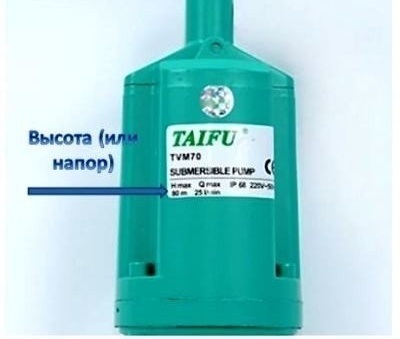
It is easy to find information on the maximum lifting height of water on the pump label: it is indicated by the Latin letter H and is indicated in meters
With an average productivity of 20 liters per minute, you pump out 2 thousand liters. in 1.5 hours, and if we take into account the pressure loss at the joints of the hoses, this figure will be even less. Plus - consider all adapters if you connect hoses. They reduce pressure, which means that the flow rate will decrease. As a result, for irrigation under the root of the Brook, and the like are quite suitable. But if you expect to use sprinklers - vibration systems will not work.They are too sensitive to pressure changes, and when overloaded, the motor burns out quickly.
Advice! Models with an upper water intake are more practical, since they have a reduced likelihood of siltation and particles of sand and bottom sediment getting inside.
Some practical summer residents cost "streams" when watering from tanks. First, they pump liquid into the barrel, it heats up. And when necessary, immerse the device in a container and use it instead of a special barrel one. The only but significant minus is the loud noise. While you are watering, the neighbors will be forced to listen to the roar of the motor.
If the distance to the reservoir is more than 200 meters, then the most reliable will be submersible centrifugal pumps having a maximum head of 70 m and above. To organize the supply of water to the beds, lay PND32 or 40 pipes to the beginning of the pipe section, since it is not very convenient to unwind the hose at such a distance each time. Well, if you still use a hose, then only three-layer PVC 3/4 ″ with additional reinforcement. Simple hoses may stick together due to pressure drops and the system will stop functioning.
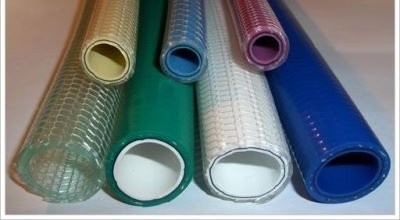
Watering hoses must be tight, multi-layered and reinforced to withstand a rarefied atmosphere during irrigation and not stick together
Borehole (or deep) pumps are difficult to install and maintain, and therefore require professional handling. In addition, they have to be dismantled for the winter. But if there is no other source of water on the site, then it is more convenient to pump water into the tank with such a system, and then, heated, to part the site with a less powerful and complex pump (the same surface or barrel pump).
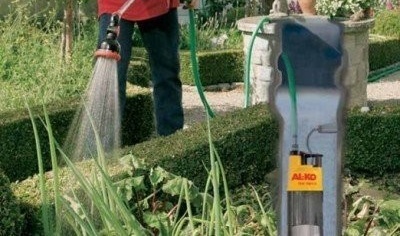
The water from the wells is always very cold, therefore, lifting it to the surface with a submersible pump, do not water directly onto the plants, but let it heat in containers
Drop watering: the best special equipment
Owners who prefer to spend water sparingly water the gardens with drip. This saves time and does not waste water. For drip irrigation, there are special submersible pumps equipped with automation. The owner sets a certain mode to pressure switch and using the timer sets the watering time. The system takes care of the rest.
Such equipment is expensive, but frees the summer resident a lot of time, which was previously spent on watering.
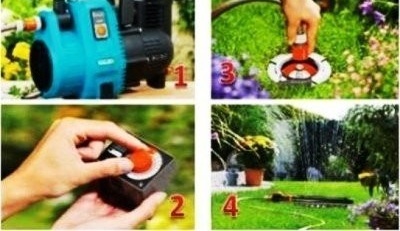
If you cannot find a pump with automatic equipment in one set, then you can buy a submersible pump and understaff it with the necessary details
However, practice shows that any inexpensive pump can create the necessary working pressure of 1-2 bar. Another thing is where the water comes from. You won’t be able to take liquid from reservoirs without additional filter systems, since the built-in filter will quickly clog. Therefore, either central water supply, or a well, or a well remains. We have already considered the options for units for these sources of water supply above. True, it is worth adding that the most reliable type of drip irrigation pump is centrifugal. Only he is able to supply a large amount of water throughout the day under high pressure without overheating the motor.
To choose a pump with optimal performance, you need to figure out what your hourly water flow will be. They do it this way: draw a grid of the location of the drip tapes on paper and calculate the total length of the water supply. Then multiply it with the number of droppers punched on 1 running meter. This figure will be the performance. For example, if you lay only 100 m of tape with 5 droppers on each meter, then all droppers will turn out to be 500. Each of them on average consumes a liter of water per hour. Accordingly, the required pump capacity is 500 l / h.
When choosing pumps it is not necessary to search for the names of well-known brands. It is much more important to study their power, operating conditions and level of popularity in your area.The latter will be needed when the unit breaks down: it is easier to find spare parts for popular models, and they are more likely to take repairs.
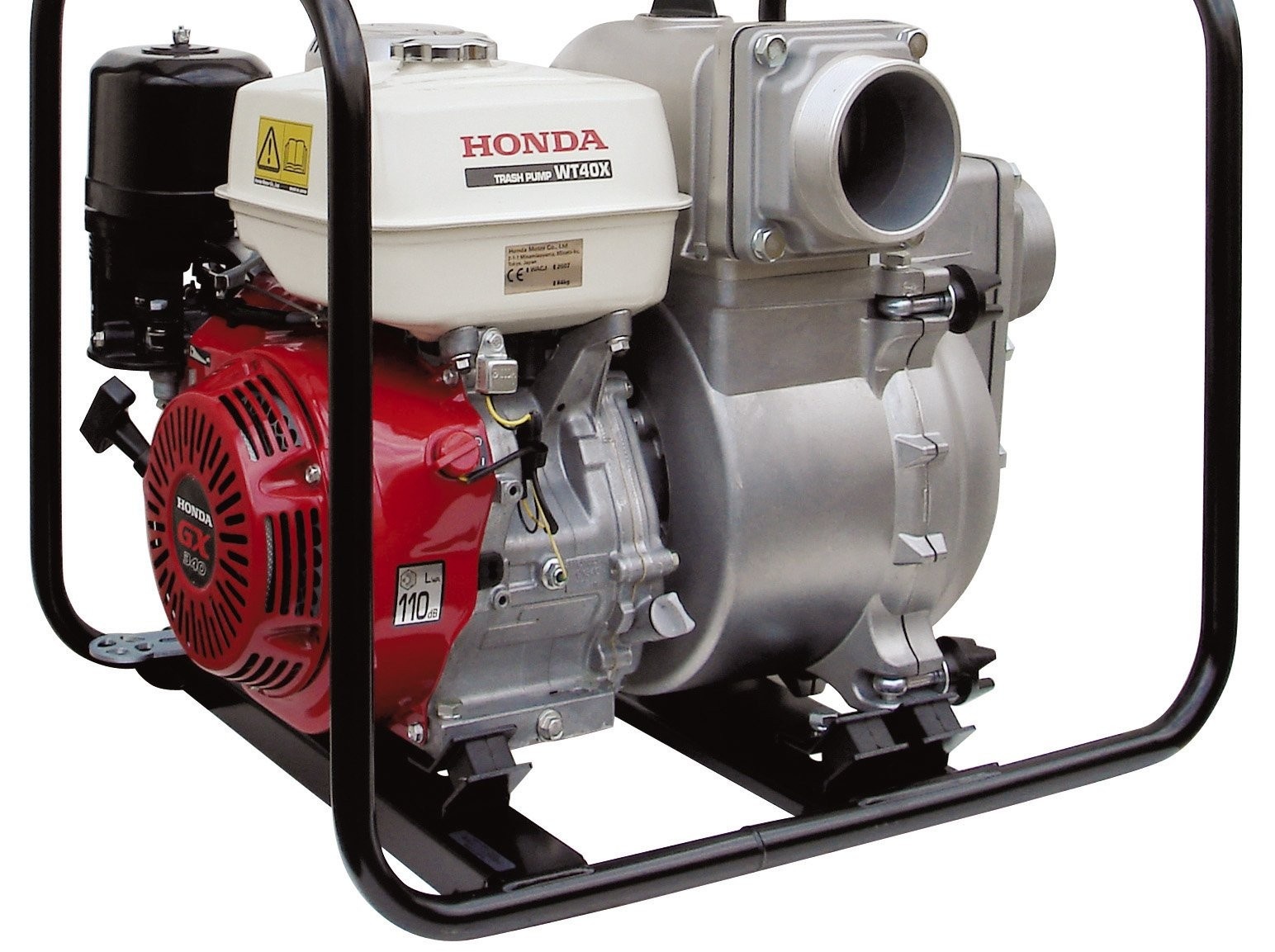

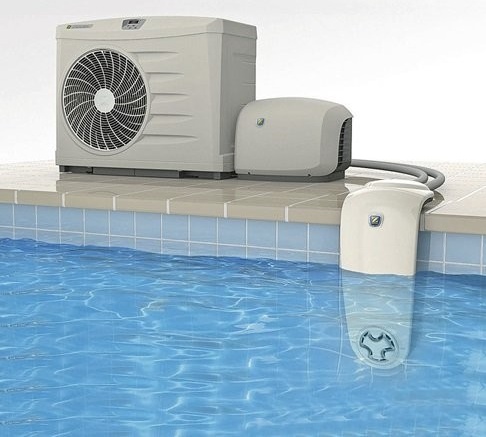
6 comments